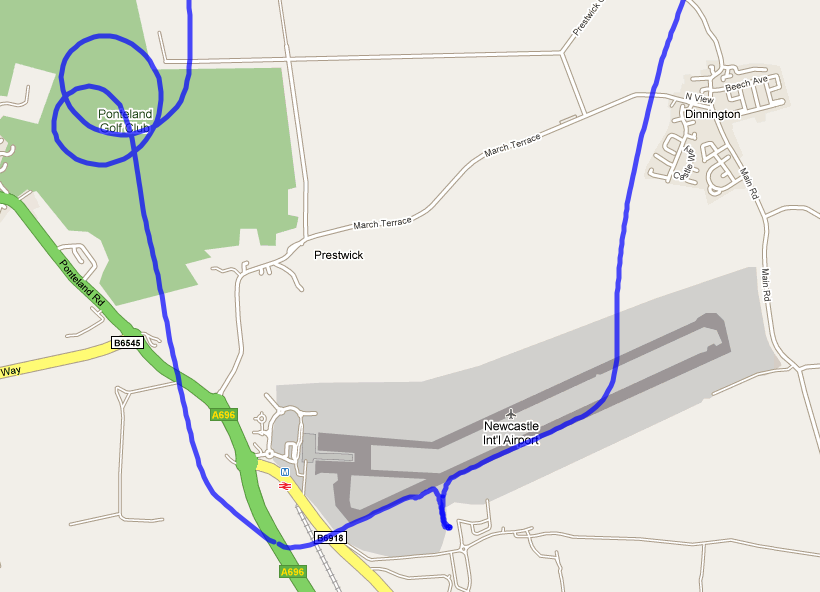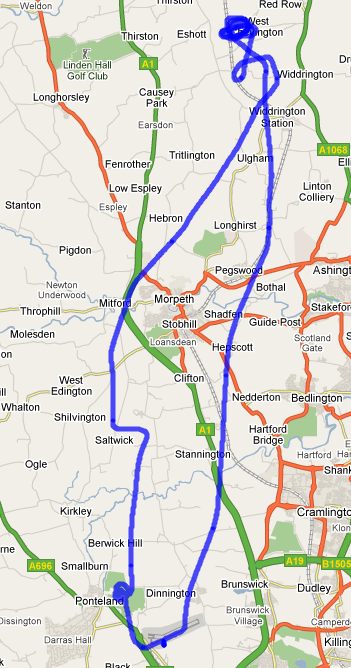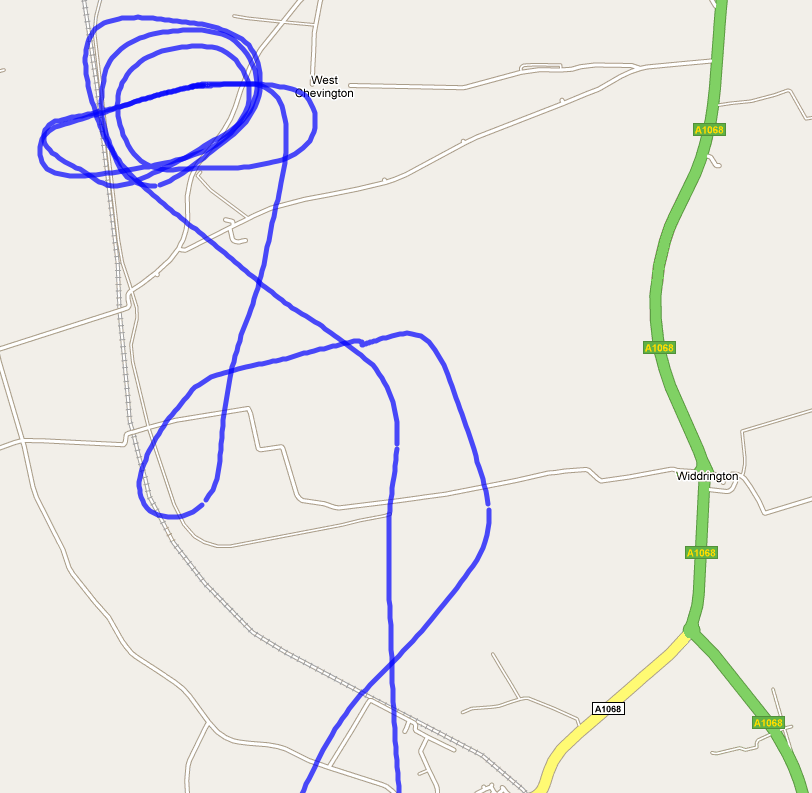Lesson 24 – 22nd August 2009 – 1045 – 54 minutes – Total so far – 26 hours 8 mins
Lesson 25 – 22nd August 2009 – 1630 – 32 minutes – Total so far – 26 hours 40 mins
Lesson 26 – 22nd August 2009 – 1820 – 24 minutes – Total so far – 27 hours 4 mins
The opportunity for some cheap flying presented itself today. Steve had suggested coming to Carlisle with him as he had to take the helicopter there anyway for some trial lessons. Because the helicopter had to go there anyway, I would get the trip at cost and as I would be flying the hours would count towards the Commercial Pilot’s licence. My kind of deal. 
Early start. I’d had a bad night’s sleep and wasn’t as bright and bushy tailed as I would have liked, but normally when I start focussing on piloting a heli, it all comes together and to a great extent it did today, but there were also moments where my lack of concentration made for a cockup and I got a berating from ATC (more detail later). Ironically, the current exam I am studying for is “Human Factors and Pilot Performance”, which is pretty much about the effects of various things (incl. tiredness) on flying. So, talk about living the book !!
G-MAVI (Northumbria01) was the bird of choice today. It needed some oil, so I put a pint or so in. It also needed fuel, so I took the initiative and pushed it to the bowser. I’m sure I’d done this before, but I think this was the first time I’d done it without Steve there to add some welly. Need to work on a technique I think, ‘cos he can do it no bother, and there’s nee meat on Steve.
I did the usual pre-flight, startup checks routine. Steve joined me and we we’re off. Runway 25 today (very much a westerly wind), but I was thrown a bit when they asked us to depart directly north. I had to ask Steve what they’d said. In fact, a lot of today’s R/T on my part has been poor, 95% of it because I can’t make out what they are saying. It’s quite frustrating. I think it’s a combination of the headset quality (school headset) and me not knowing what they’re going to say. I find when I know what they should be saying, I can work it out, but if I have to listen to something new, I get thrown !!! Maybe time to invest in a headset !
We did some instrument flying on the way over there. It’s an area I feel quite comfortable with. To be honest, I do a lot of normal flying with lots of reference to the instruments, so after about 5 minutes of only looking at the instruments, I was happy to say “enough’s enough” and proceed visually.
The flight over there was uneventful. Steve took some photos for me, thanks Steve.
dp + Steve….
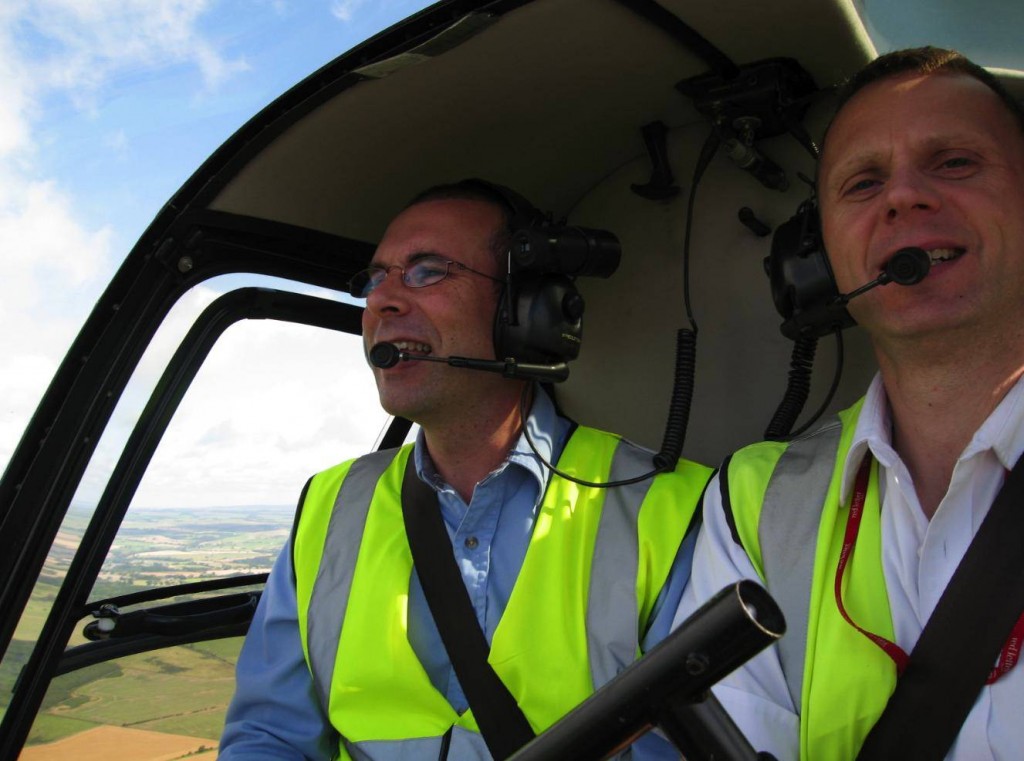
River near Hexham…..
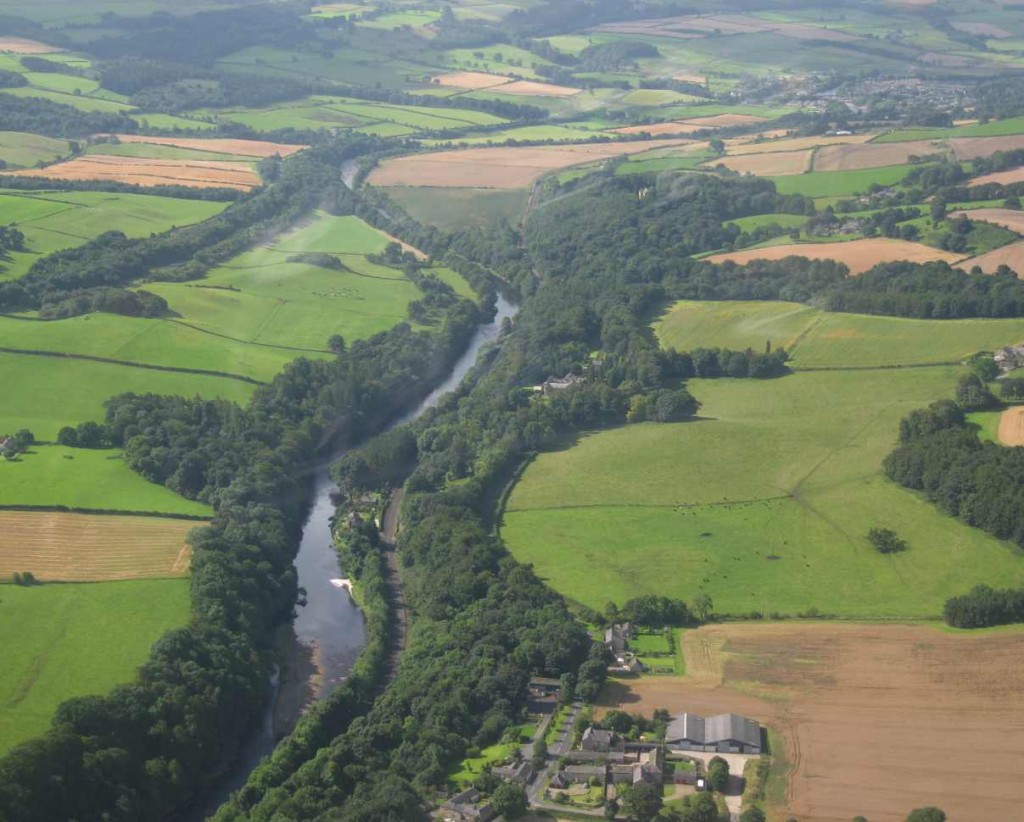
Spadeadam was closed, so no fast jets to see, sod’s law when I have a camera attached to my head.
As we closed in on Carlisle, the R/T banter increased and again, I really struggled to understand what was said. Here’s my recollection of the conversation that ensued……
Carlisle Tower :- …………..Runway 25……………..19…………Left base…………..
dp :- ?
Now, what I _SHOULD_ do is to ask them to “say again”, but idiot me………….
dp :- Join left base runway 25, Northumbria01.
Steve told me that what they’d said was to “stay north of the centreline for Runway 25, and join left base for Runway 19″.
Needless to say, Carlisle Tower were back on the blower clarifying the instruction. In no time, we were at Carlisle and I hadn’t thought the approach through enough !! I also had my fixed wing head on, and I was going to do a left-base approach for runway 19 as a fixed wing would do, bearing in mind the winds are westerly, which would have been a crosswind landing !!!!
So, Steve corrected me and explained that we could approach runway 19 but against the wind, so what we should have been doing was ending up over the numbers of Runway 19, but approaching into wind. It didn’t sink in, tiredness being the reason I think 
So, although I approached Runway 19 numbers in the right direction, I overshot the approach and ended up in the helicopter practice area that I have been in before.
I can’t remember verbatim what happened next, but it went something like this….
Carlisle Tower :- Northumbria01, you have entered the helicopter practice area and your instructions were to land on Runway 19.
dp :- Sorry, my bad.
Well, I was kicking myself ! 
Carlisle Tower :- In future, if you are not going to follow my instructions, please let me know.
dp :- Understood, Affirm, sorry again.
I felt as guilty as sin !! Steve was mildly amused.
So, we were cleared to taxi “to the ‘H’”. So, I taxi’ed us over and then the best bit of the whole day came !!!!!!
I’d been reading up on helicopter principles of flight for the recent exams and something I had read had really helped me learn how to land without farting on up and down for 30 seconds, so here was my first chance to put it into practice.
When a helicopter is close to the ground, you get this cushion of air underneath which gets bigger as you get closer to the ground (effectively). So, in a very slight way, a continual lowering of the collective is required to land in one go. Previously, I had been going down in stages and at each stage trying to maintain the perfect hover. So, I put into practice what I had learned in the book and what resulted was in my opinion the perfect landing. There was no movement in any direction and the vertical speed at touch down was a beautiful kiss. I was so excited, I shouted out “OH BEAUTIFUL !!!” or something like that. It’ll be on the video (tomorrow or later today for the video) it was that loud. Steve was pleased at my joy. It really was spot on. There was only one complaint I have with it, is that it wasn’t on the “H”, it was to one side. Which come to think of it, makes the whole thing not as impressive, but I wasn’t intending to land on the “H” so not too worried about that. I was on a total high after that.
Steve got out while I shut it down. 5 minutes later when it was time to exit the helicopter, it dawned on me that the ATC tower was right next to the “H” and I may be getting stern looks for my earlier antics.
As I exited the helicopter, I gave them a wave and I got a friendly wave back, so I think I’d been forgiven.
Steve then did 3 trial lessons whilst I read “Human Factors and Pilot Performance”. At one point, we had some refreshments in the excellent cafe there. It was then time for Lesson 25.
I started her up and Steve got in, and we had to wait 5 minutes whilst an R44 was refuelling and then a quick hover over to the pumps, another successful landing with my new technique, although not as perfect as previously. Shut down, refuel, restart and we we’re off to Eshott for the fly-in event for “Help for Heroes” charity. This was the first ever time I had flown an a/c without reference to a map, and WITH reference to a GPS. In my previous flying time about 15 years ago, I don’t think GPS systems were as abundant. It makes life so much easier than consulting a map ! So much safer too !
So, with a tailwind, we were there about 20 minutes later. It was _busy_ ! Lots of a/c in the circuit and again I _STILL_ had my fixed wing head on. Steve suggested doing a low, tight circuit
and advising Eshott radio that we would stay clear of the active runway. Of course, it allowed us to get straight-in, nipping to the front of the “queue”. We transitioned into the hover taxi next to the active runway and we then followed another runway to a marshaller who told us where to land. Lots of people watching as I made this landing, which was a bit offputting, but one last turn back into wind, and another BEAUTIFUL landing. This new technique was really paying off !!! And better still, I hadn’t embarassed myself with one of my “up and down for 30 seconds” jobs !!!
Steve got out to make sure noone endangered themself, I shut it down and then we went to sign in. Lots of chatting to fellow pilots ensued.
I took a few photos at Eshott….
Some of the other a/c at Eshott….
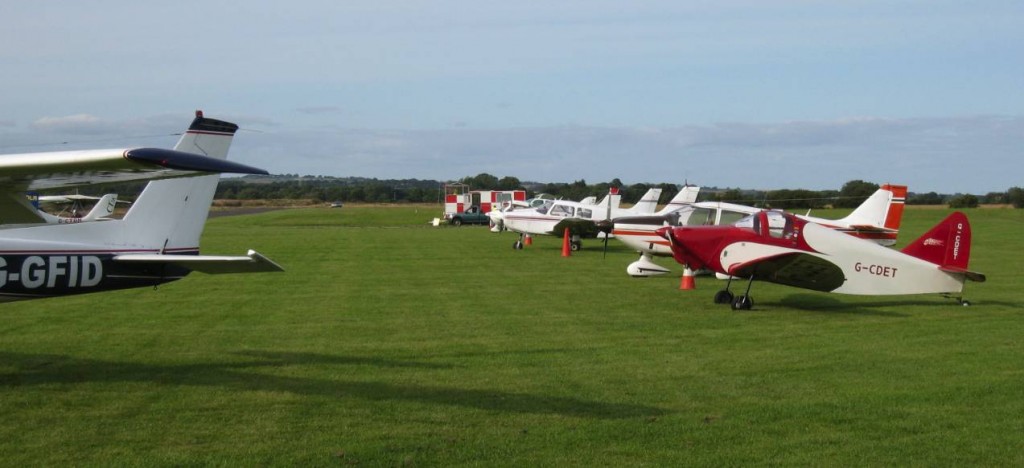
Here’s where we parked…..
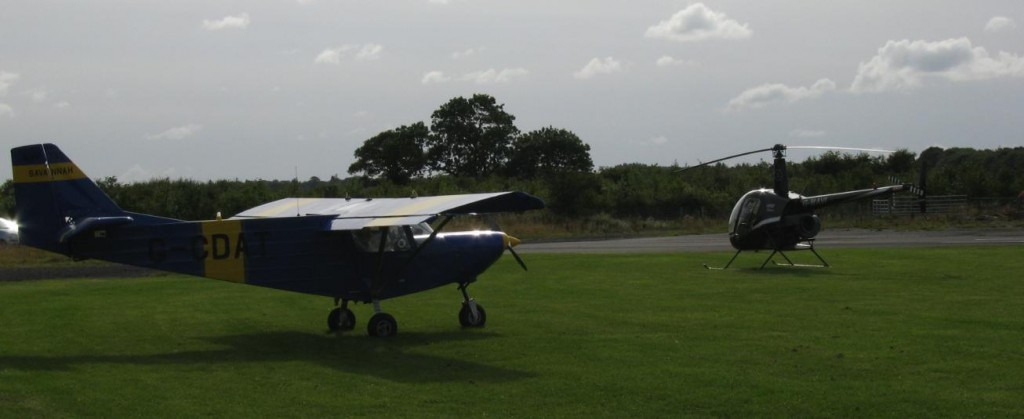
Really good to chat to other pilots. Some very interesting stuff. I spoke to one chap who was a microlight owner and he also flew model helicopters. He was thinking about doing a trial lesson and was remarking how he thought he’d find hovering easy because of his time with model helicopters. I couldn’t help think that NOTHING will help you for your first hover practice, but I didn’t have the heart to quash his enthusiasm.
After about 2 hours at Eshott and a stiff coke (we were offered Vodka in it, but we had one more leg to fly, so it wasn’t as stiff as we’d have liked), it was tme to fly back to EGNT. I went to check the heli over, and then a mini airshow started. The heli was right next to the runway, so I was right underneath this very fast biplane type of a/c. He did some great stuff (video to follow).
Once he’d done his thing and flown off, I finished the checks and Steve came out. I started her up and he maintained a vigil on the tail rotor to make sure noone strayed into it. It’s easily damaged 
We then went flew to a very quite/calm Newcastle. So quiet, Steve had chance to have a chat with the ATC chap on duty. I _STILL_ did a fixed wing approach, very shallow glide angle, lots of speed. It’s obviously more inbrained into me than I think. Need to work on that BIG TIME !!
But, it was safe, short taxi and then an “ok” landing at the Bowser. I still employed my new technique, but instead of the straight-down repeat of my last 3 landings, I aborted once, but got it down the second time.
All in all, a good and cheap(ish) day’s flying. Poor approach at Carlisle, BAD TIMES !! Excellent landing improvements generally, GOOD TIMES !!
An exhausted dp resulted and I only just made it through the night’s tv and food ! No sooner had I hit the pillow, I was fast asleep !!
I’ll do the video asap, but may not be today.
Only one lesson booked for this week (monday), due to busy week with kp. Intend to book a lot more for the following week to maximise British “summer”. 

